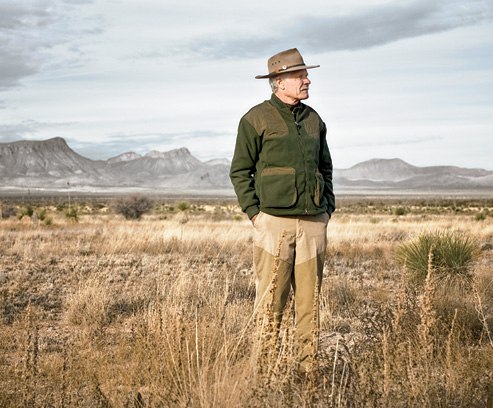 Oh, give me a home where the buffalo roam” is the opening line of one of America’s most famous folk songs. But Ted Turner might be excused if he thinks it was written especially for him. As the largest individual landholder in the United States—he has title to nearly two million acres in 11 states—he has not one but many homes where the buffalo roam. And he lays claim to about 50,000 of those majestic, if sometimes ornery, critters—the largest land animal, he proudly observes, in all of North America.
Oh, give me a home where the buffalo roam” is the opening line of one of America’s most famous folk songs. But Ted Turner might be excused if he thinks it was written especially for him. As the largest individual landholder in the United States—he has title to nearly two million acres in 11 states—he has not one but many homes where the buffalo roam. And he lays claim to about 50,000 of those majestic, if sometimes ornery, critters—the largest land animal, he proudly observes, in all of North America.
Turner’s main residence is near Tallahassee, Florida (see Architectural Digest, July 2004). On visits to his many western and midwestern ranches, he usually stays in the house, however humble, that was already there. “I just want someplace where I can close the door to keep the flies out,” he says.
When his friends visited his Armendaris Ranch in New Mexico, for instance, they stayed in what had been the cowboys’ bunkhouse: one room for everybody, a bath with open showers and nothing for entertainment but the sound of the wind, which sometimes reaches 50 miles an hour during the winter. “The girls had to wait until the boys were done in the bathroom,” he says of that spartan desert dormitory. “It was rudimentary.”
It was too rudimentary, in fact, to be the center of such a vast property—350,000 acres. In 2006 he decided it was time for a proper house, beautiful yet simple, and in no sense wasteful. “I don’t believe in wasting anything,” he says. “I’m fairly wealthy, but I even save paper clips.” A hacienda-style house with four bedrooms is what he wanted, and when Laura Hunt, the Dallas designer who was in charge of the project, and Chris Carson, a San Antonio architect, inspected the site, they found two stakes firmly embedded in the Armendaris’s dusty soil. One was where Turner wanted his front door; the other was where he wanted his bedroom windows to look out on the Fra Cristobal Mountains.
Hunt thought he should have chosen a site in the Fra Cristobals themselves, one that would look down at the desert, rather than one on the desert that would look up at the mountains. But Turner, the man who irrevocably altered television broadcasting with the introduction of CNN and 24-hour cable news, knew what he was doing. “It was a brilliant choice,” Hunt now admits, “and I’ve had to eat my words. When you’re in the house, you’re part of the desert—and you still have beautiful landscapes.”


















